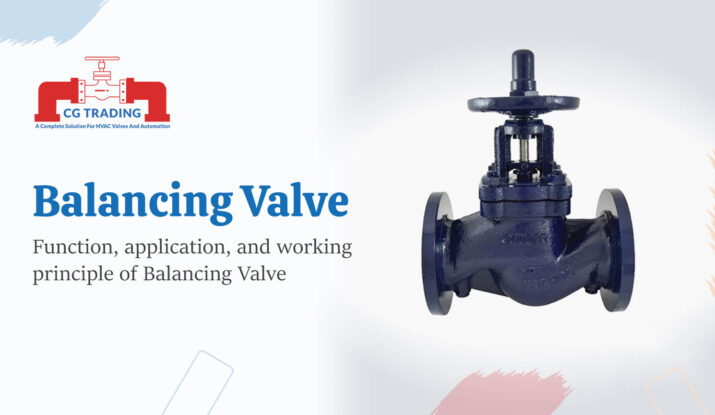In the intricate dance of fluid systems, balance is key. Whether it’s in a heating or cooling system, a well-balanced flow ensures optimal performance and efficiency. Enter the unsung hero: the balancing valve. While often overlooked, balancing valves play a crucial role in ensuring the smooth operation of HVAC (Heating, Ventilation, and Air Conditioning) systems. In this blog, we delve into the function, application, and working principle of balancing valves, shedding light on their significance in maintaining fluid flow harmony.
Function of Balancing Valve
Balancing valves are designed to regulate and control the flow of fluids within a piping system. Their primary function is to balance the flow rates of multiple branches or circuits within the system, ensuring each receives its fair share of fluid without overloading or underutilizing any particular branch. By adjusting the flow rates, balancing valves help maintain the desired temperature, pressure, and flow velocity throughout the system.
Applications of Balancing Valve
Balancing valves find widespread application in various HVAC systems, including hydronic heating and cooling systems, chilled water systems, and radiant floor heating systems. In these systems, balancing valves are typically installed at strategic points such as branch outlets, risers, or return lines to regulate the flow of water or other fluids.
In hydronic heating and cooling systems, balancing valves ensure that each heating or cooling zone receives the appropriate amount of fluid flow to maintain the desired indoor temperature. Similarly, in chilled water systems, balancing valves help distribute chilled water evenly to different parts of a building, preventing temperature variations and ensuring comfort.
Working Principle of Balancing Valve
The working principle of a balancing valve is relatively simple yet effective. Balancing valves operate based on the principle of pressure differential. They feature a valve mechanism that can be adjusted to control the flow rate through the valve. By throttling the valve opening, the resistance to flow is increased, causing a pressure drop across the valve.
When installed in a piping system, balancing valves are adjusted to achieve the desired flow rates in each branch or circuit. This adjustment is typically based on flow measurements or calculations to ensure the proper distribution of fluid. By fine-tuning the balancing valves, system designers can achieve hydraulic balance, where the flow rates through all branches are proportional to their design requirements. This is how the balancing valve purpose is completed.
Various Types of Balancing Valve
Balancing valves come in various types, including manual balancing valves, automatic balancing valves, and dynamic balancing valves. Manual balancing valves require manual adjustment by turning a handle or knob, making them suitable for smaller systems or applications where flow rates are relatively stable. Automatic balancing valves, on the other hand, feature self-regulating mechanisms that adjust the valve opening based on flow conditions, making them ideal for larger systems with fluctuating demands.
Dynamic balancing valves combine the features of manual and automatic valves, offering both manual adjustment and automatic flow regulation. These valves are equipped with dynamic flow controllers that respond to changes in flow conditions, ensuring continuous balancing of the system without the need for manual intervention.
Conclusion
Balancing valves play a crucial role in maintaining the efficiency, comfort, and reliability of HVAC systems, with their ability to regulate and control fluid flow. From hydronic heating to chilled water distribution, these valves ensure that every branch of the system receives its fair share of fluid, creating a symphony of flow where each note is perfectly tuned. So, the next time you experience the comfort of a well-heated room or the refreshing coolness of air conditioning, remember to thank the balancing valve quietly working behind the scenes.

CG Trading
CG Trading is the leading supplier, trader, exporter, and distributor in the valve industry. We specialize in providing high-quality valves for the HVAC, firefighting, and industrial sectors.

